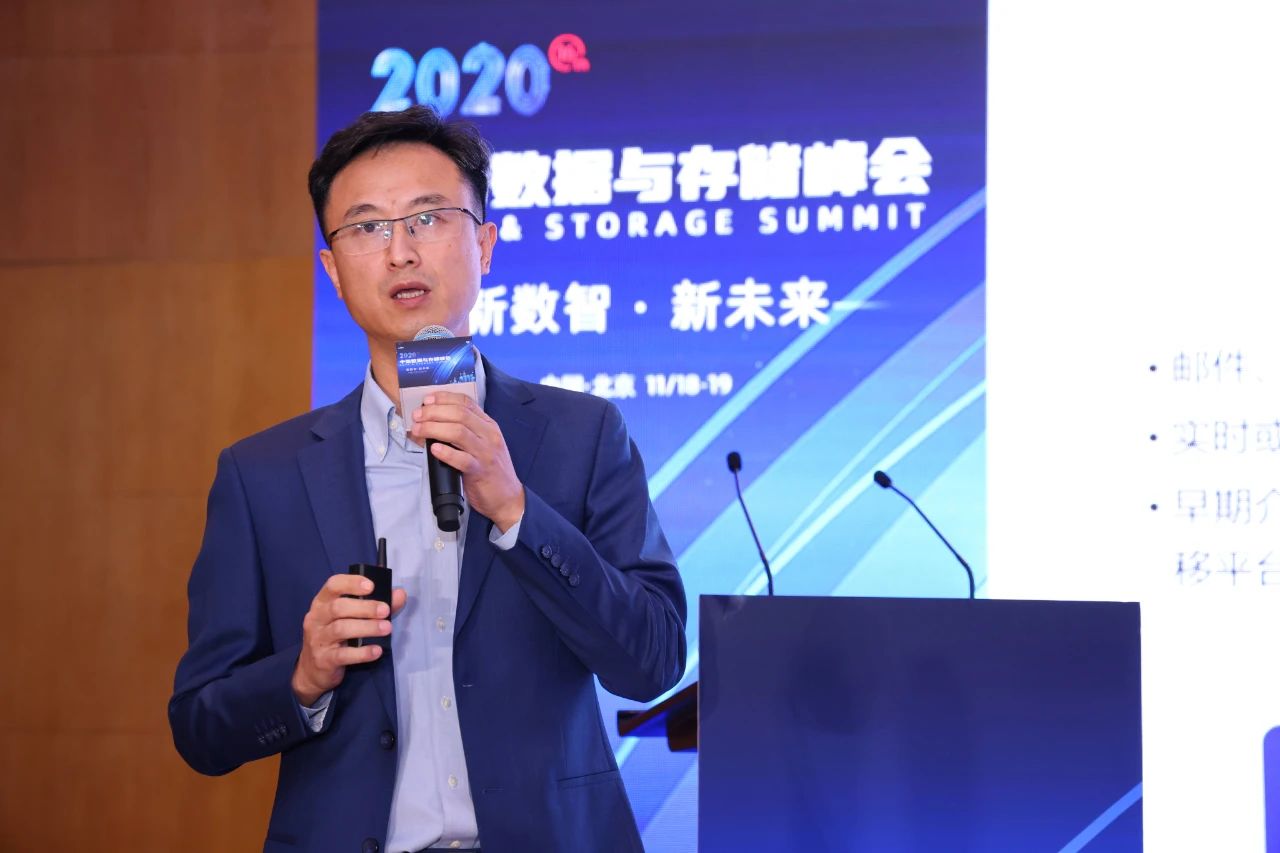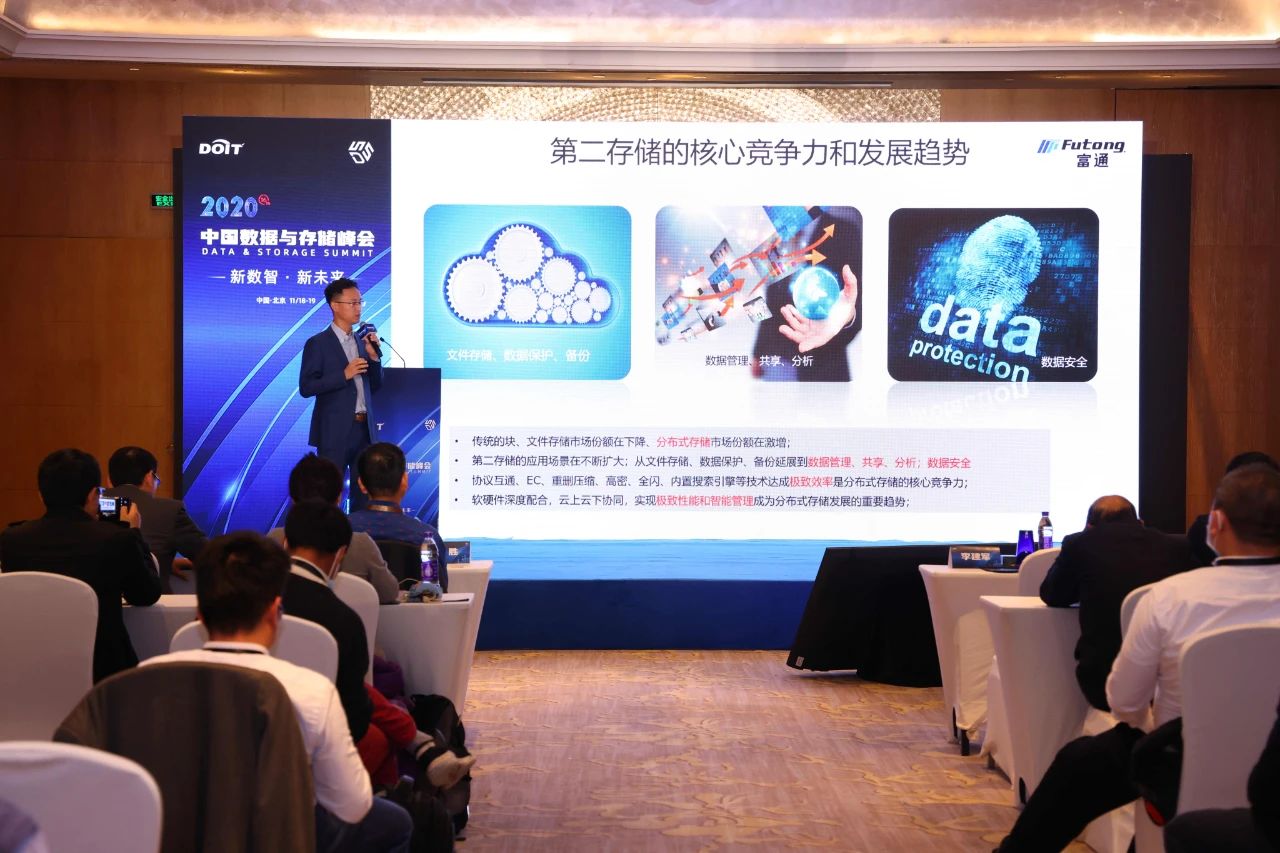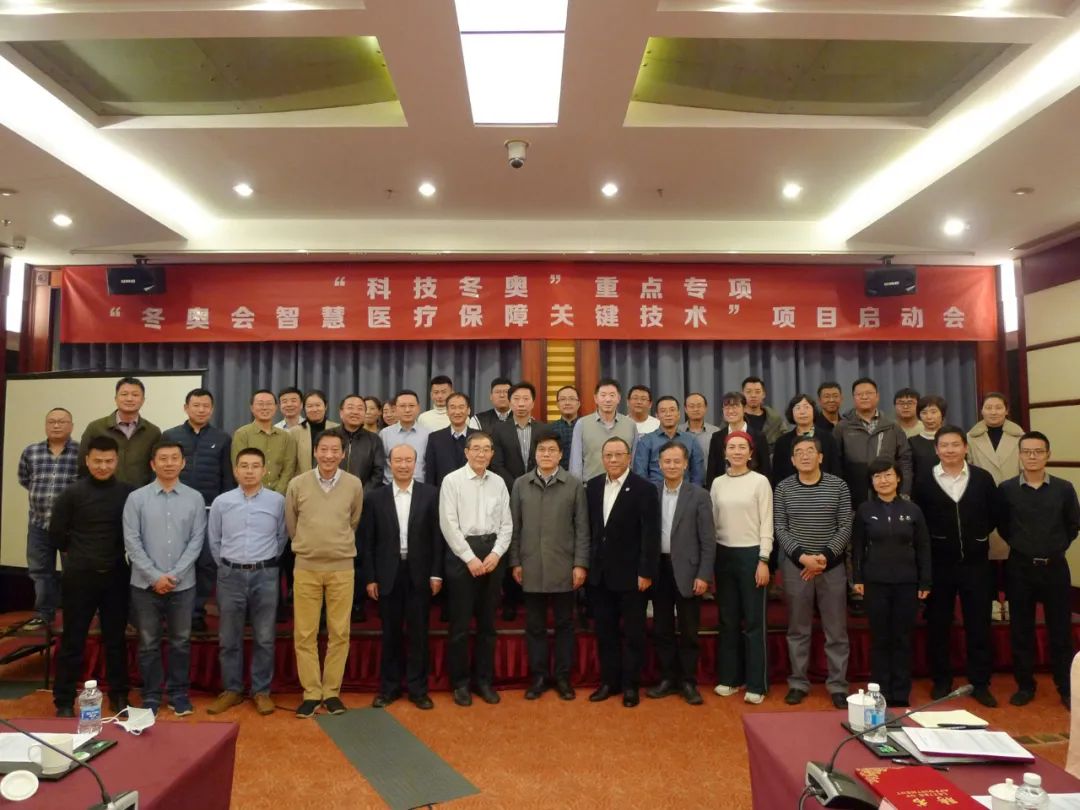On November 18-19, the "2020 China Data and Storage Summit," hosted by the leading domestic data intelligence industry media DOIT, was held in Beijing. The conference, themed "New Data Intelligence · New Future," specially invited academician Zheng Weiming from the Chinese Academy of Engineering, as well as guests from the China Electronics Society, the Storage Special Committee of the China Computer Federation, SNIA, and other organizations, to discuss with leading suppliers and representatives of typical enterprise users the development trends of storage technology in the new data era, share the achievements of digital transformation, and jointly discuss the intelligent future.
New-generation full-stack cloud management service provider Futong Cloud was invited to the conference, where Mr. Li Jianjun, the Director of Futong Cloud's Enterprise Cloud Disk product, delivered a keynote speech titled "Best Practices for Non-Critical Business Data Management as an 'Integration Bridge' of Application Convergence" at the Second Storage and Data Management Forum.
Exploring the Development Trends of Storage Technology in the New Data Era
With the continuous enrichment of new application scenarios such as 5G, AI, and the Internet of Things, the storage and innovative demands for massive data are increasing day by day. What kind of storage is the most suitable for you? Is it a storage array, or distributed storage? Is it high-end storage, or all-flash arrays? How to use SCM technology represented by Optane? What kind of sparks do blockchain and storage collide? How can data infrastructure meet the business needs of cloud-native applications?

Against this backdrop, the summit held a main forum on the first day and 11 parallel forums online/offline on the second day, totaling over a hundred presentations, showcasing the latest changes in the technology and application development of the current data storage field. The offline forums covered areas such as storage system innovation, Storage for AI, new infrastructure and digitalization, all-flash storage, blockchain and data storage, NVMe SSD applications, hyper-converged applications, secondary storage and data management, and more.
Dissecting the Management of Non-Critical Business Data
According to IDC's report "Data Age 2025," it is predicted that from 2018 to 2025, global data will rapidly increase from 33ZB to 175ZB, with unstructured data accounting for more than 80%. Distributed storage, with its high scalability and easy management capabilities, has become an important choice for carrying massive amounts of data. Gartner's newly defined secondary storage array in 2019 specifically emphasizes that the form must be Scale Out. As enterprises transform towards digitalization, traditional application models (database + storage) need to transform, requiring application innovation and change. Distributed storage solves the problem of storing massive data, but enterprises should clarify how to address data management, data security, and compliance issues.
At the beginning of his speech, Mr. Li Jianjun first introduced the manifestations of data in the operation of enterprises:
• Centered around communication: Emails, instant messaging tools; real-time or delayed messages; early involvement is more frequent, gradually shifting platforms in the middle and later stages.
• Centered around individuals: Documents, files, and other intellectual achievement files; have flexible needs for sharing, collaboration, security, search, and processes.
• Centered around business: ERP, CRM, supply chain; mainly oriented towards structured data; requirements are highly targeted, with different needs across different enterprises and departments.

He pointed out that in enterprises, non-critical business data centered around communication and individuals is often scattered across applications and file servers, which can easily lead to data silos. With the development of secondary storage applications, how to store this unstructured, non-critical data in distributed storage and object storage is a matter of concern.
Li Jianjun stated that the market share of traditional block and file storage is declining, while the market share of distributed storage is surging; the application scenarios of secondary storage are continuously expanding, including file storage, data protection, backup extension to data management, sharing, analysis, and data security; protocol interconnectivity, EC, deduplication and compression, high-density, all-flash, built-in search engines, and other technologies achieving ultimate efficiency are the core competencies of distributed storage; deep cooperation between software and hardware, and collaboration between cloud and on-premises, to achieve ultimate performance and intelligent management have become important trends in the development of distributed storage.

By sharing typical cases of non-critical business data management in industries such as finance, manufacturing, and healthcare, Mr. Li Jianjun proposed the key technical points and development directions for non-critical business data management:
• Storage: Storage of massive data; unified view of data across regions; low cost for data disaster recovery.
• Sharing: Data accessible at any time; sharing and collaboration; multiple terminals.
• Analysis: Data categorization; data preprocessing; data mining.
• Security: Data encryption; data compliance.
In conclusion, Mr. Li Jianjun summarized the approach to managing non-critical business data: separating applications from data, building a "bridge" for application integration, constructing a new application ecosystem around distributed storage, and enhancing the value of non-critical business data.
Futong Cloud has provided a comprehensive set of solutions for the many challenges enterprises face in managing unstructured data, data sharing, data access control, and data search, meeting customer needs for high data availability and elastic expansion. The company offers customers a secure, reliable, cost-effective, and low Total Cost of Ownership (TCO) enterprise-level data management service.







